Gods, Monsters and Heroes. These are the thematic foundations of Theros, a world inspired by classic Greco-Roman myths and legends – but this time, with a Magic twist. One of the most successful and flavorful top-down design sets, Theros featured several new mechanics and an epic tale of its own. The three original Theros sets followed the story of Elspeth Tirel through her hero’s journey, evolving to fit the rise, success and fall of the Planeswalker herself.
With the new year drawing closer, the arrival of Theros: Beyond Death will give new players the opportunity to visit this iconic plane for the first time. To catch everyone up on what’s happened since our last visit to Theros, here’s an overview of the story, flavor and mechanics of each set in the original block.
Let’s begin!
Theros
For the first time in Magic, Theros had Gods – real, tangible deities whose powers and existence were derived from the belief of their followers. The first five Gods introduced in this set were mono-colored, and formed the major pillars of belief for the pantheon: Heliod, Thassa, Erebos, Purphoros and Nylea. Like all gods, they bestowed their blessings on mortals with heroic potential, marking them their champions. Armed with godly weapons and favors, these heroes would venture out into the world to slay monsters and become legends.

Elspeth Tirel had been on Theros once before, but returned after a desperate planeswalk away from New Phyrexia. Though she fled to Theros for peace and solace, she came upon the monstrous hydra Polukranos in Nylea’s forest and was forced to defeat it. Her victory brought her to the attention of Heliod, God of the Sun, who marked her as his champion.
Mechanics and Abilities
Theros boasted five mechanics that were strongly tied into the flavor of the set, particularly with enchantments representing the favor of the Gods.
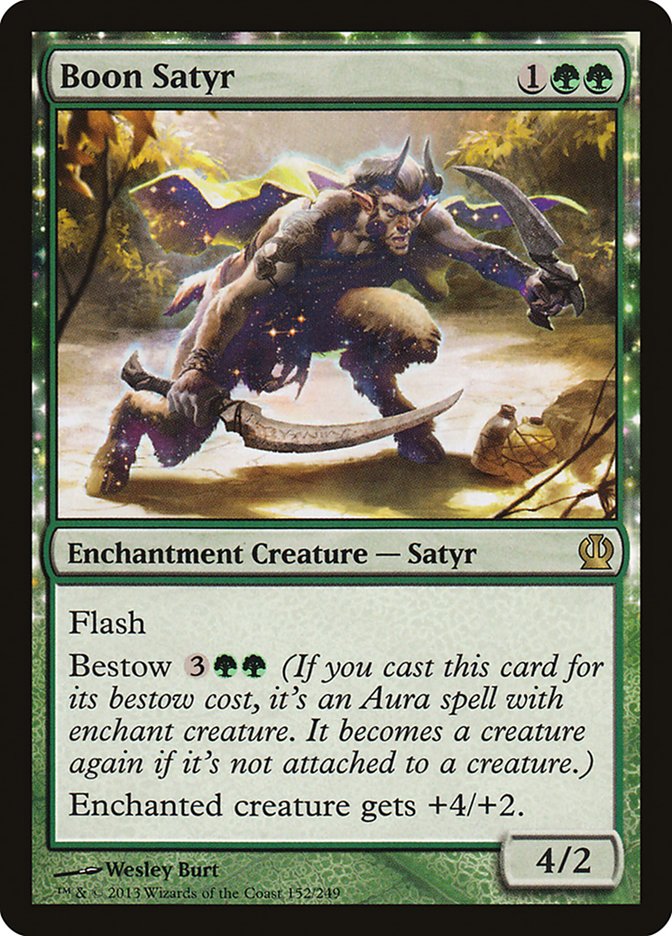
- Bestow – For the first time, you could cast enchantment creatures as either a creature (for their converted mana cost), or as an aura on another creature. If the enchanted creature died, Bestow allowed the enchantment to remain on the battlefield as an enchantment creature instead.
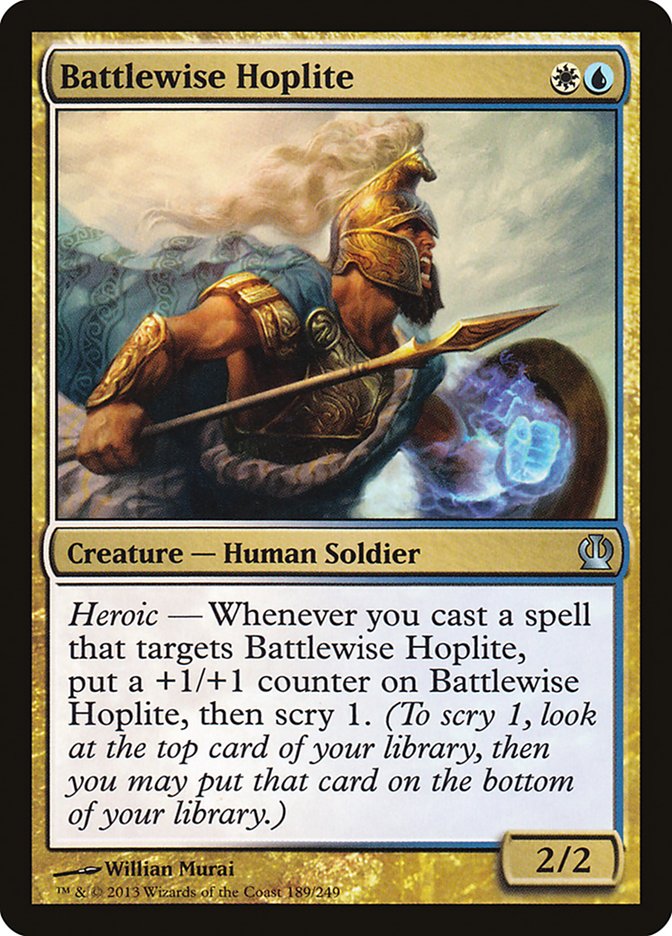
- Heroic – This ability gave a creature additional benefits any time its controller targeted it with a spell. Since this set included many enchantments and combat tricks, this was a particularly desirable payoff.

- Monstrosity – This activated ability added +1/+1 counters to creatures, making them even tougher to beat. After all, every hero needs a good monster to vanquish!

- Scry – Inspired by the oracles of ancient Greek legend, the scry mechanic returned in Theros. It allowed players to look at the top cards of their deck and decide whether to keep those cards on top or send them to the bottom.

- Devotion – This mechanic directly referenced the belief system of Theros, in which complete devotion to a God would earn you their divine favor. Devotion to a color (or colors) would take note of the number of mana symbols of those particular colors within the converted mana costs of permanents you control. Once you reached the minimum number for Devotion, different effects would take place.
Born of the Gods
Continuing the saga of Elspeth’s hero’s journey, Born of the Gods introduced new characters and complications. Kiora, a merfolk from Zendikar, comes to Theros to discover its large sea creatures and to steal the Sea God Thassa’s bident. No longer interested in the hedonistic pleasures the Multiverse has to offer, the satyr Planeswalker Xenagos returns to his home plane to stir up trouble – and eventually ascends to godhood himself. After Elspeth and her militia defeat a horde of minotaurs, the subsequent celebration elevates Xenagos to become the new God of Revels.
(Yes, that’s correct. Only on Theros can you party so hard that you become a GOD.)
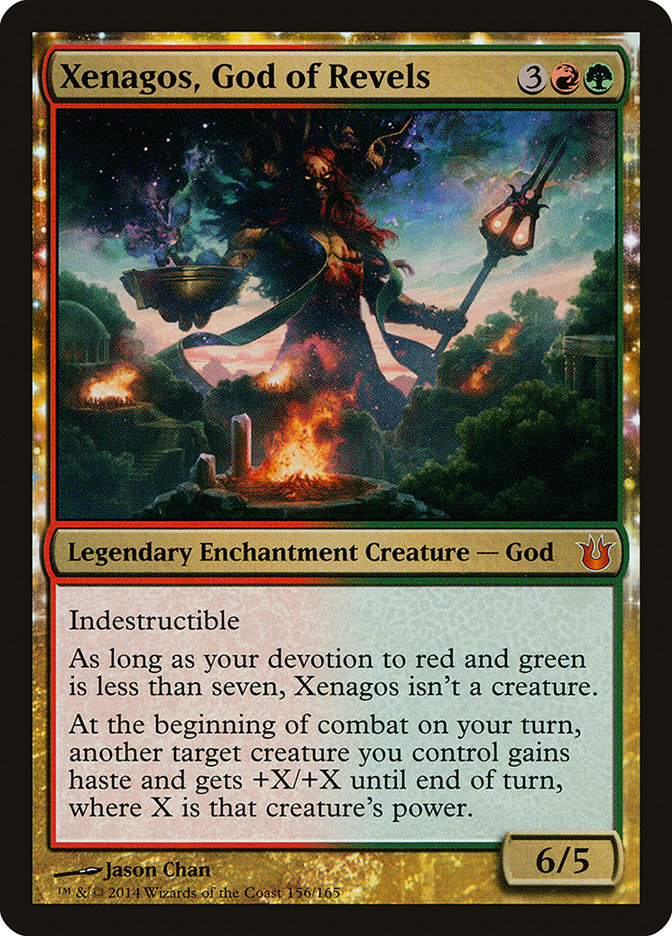
Angered by Xenagos’s hubris, Heliod blames Elspeth for the Planeswalker’s ascension. He rebukes Elspeth, and she flees into the woods.
Along with Xenagos, four other two-colored gods made their debut in Born of the Gods: Ephara, Mogis, Phenax and Karametra.
Mechanics and Abilities
Most of the mechanics and abilities from Theros returned in Born of the Gods (with the exception of Monstrosity). However, two new abilities were introduced:
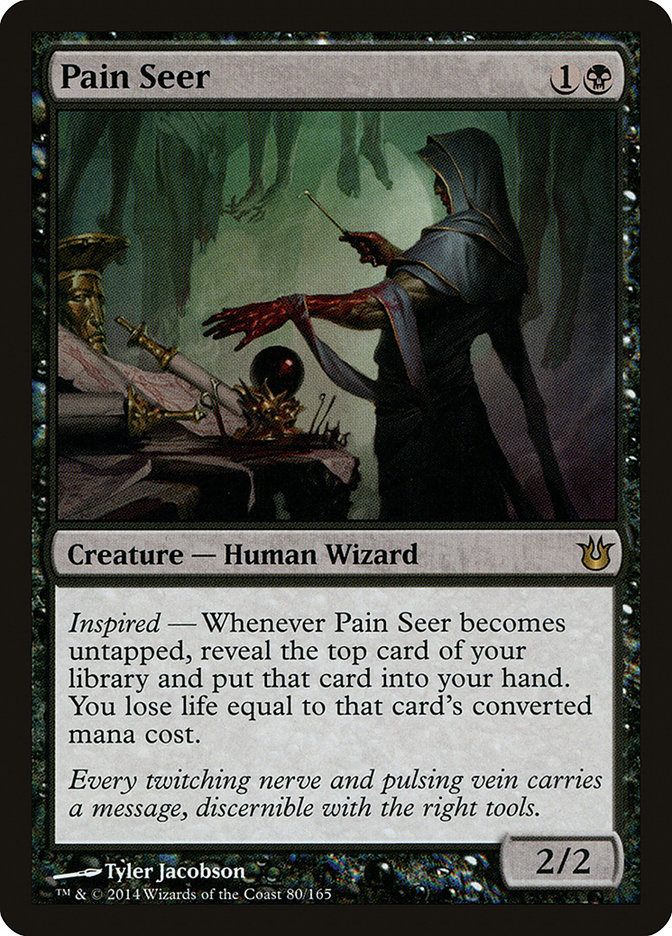
- Inspired – Likely mirroring the famous tale of Archimedes discovering water displacement, Inspired was a keyword ability that triggered whenever a creature with the ability became untapped. This flavor-fueled ability was meant to invoke the idea of becoming divinely inspired.

- Tribute – This ability gave your opponent a difficult choice: your creature could become larger, or it could do something dangerous when it entered the battlefield. This was likely a reference to the gifts the people of Theros made to monsters and Gods to either keep them away or curry their favor.
Journey Into Nyx
In the final set of original Theros block, Elspeth travels into the realm of the Gods – Nyx – to attempt to kill Xenagos. Accompanied by her steadfast leonin friend Ajani, she enters the starry world and undergoes an ordeal of her choosing from Erebos, the God of Death. Though tempted by a vision of eternal peace, Elspeth refuses and continues her journey.
Upon finally finding Xenagos, she battles him and wins, killing the new God. Her success throws the pantheon and the mortal world into conflict, with Gods fighting Gods and mortals losing their faith.

Instead of forgiving Elspeth, Heliod betrays his champion by killing her with her own weapon. He instructs Ajani to take the dying Planeswalker to the mortal world in Theros, so that she may be taken into the underworld by Erebos.
The final five two-colored gods make their appearance in Journey to Nyx: Iroas, Kruphix, Keranos, Pharika, and Athreos.
Mechanics and Abilities
Journey into Nyx included all the mechanics from the previous two sets, plus two new keywords:
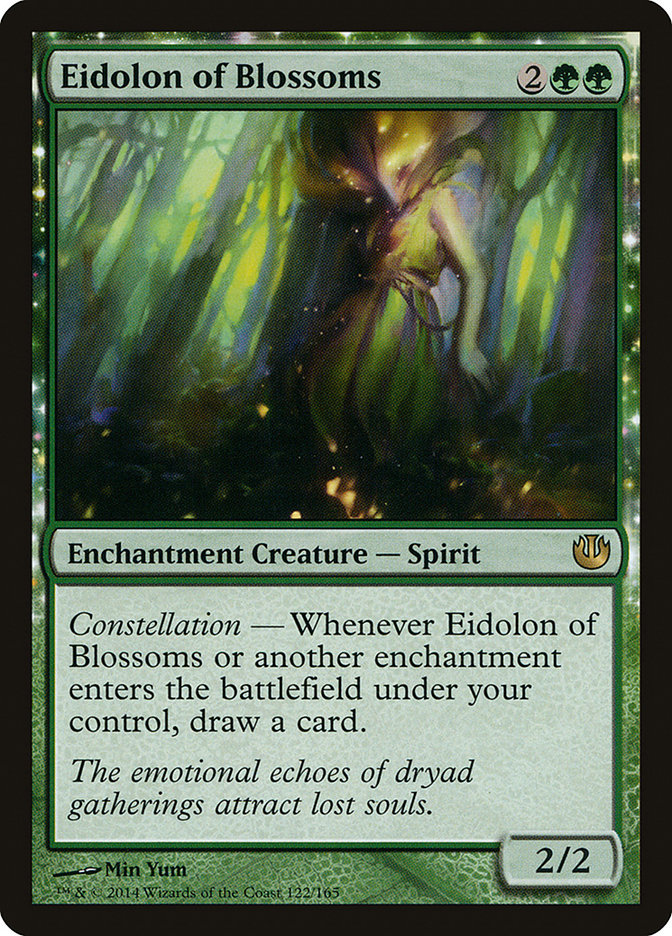
- Constellation – Representing the various constellations in the night sky of Nyx, this effect would trigger whenever an enchantment entered the battlefield under your control. This supported the “enchantments matter” theme of the Theros block as a whole.
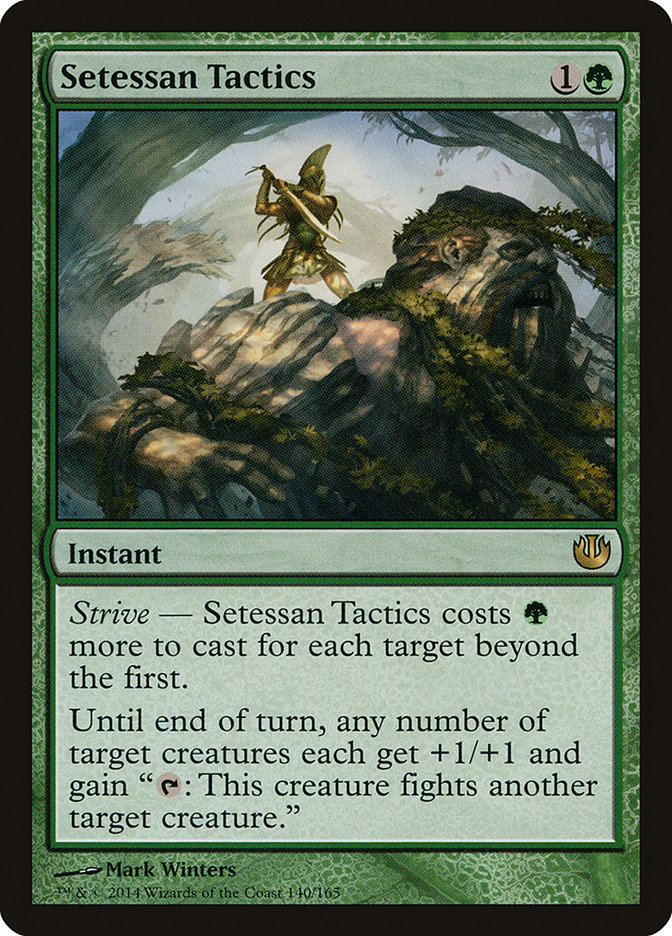
- Strive – An ability that allowed you to pay mana to increase the number of targets for a spell. Strive worked especially well with Heroic creatures.
Popular Cards
Theros was a hugely impactful block that pushed the limits of both lore and design space. Many cards from these three sets have seen a ton of play in various formats, and we’ll likely see some similar ideas return in January.
Among some of the most well-known cards from this block are:

- Elspeth, Sun’s Champion – An excellent card for tokens strategies, and a formidable finisher for control decks.

- Erebos, God of the Dead – A mono-black Commander staple, Erebos gives you card advantage at a small enough cost. His ability to disable lifegain strategies is also particularly useful.

- Courser of Kruphix – A Standard staple during its time, Courser of Kruphix not only gave you insight into what card you were drawing next, but also helped you draw the lands you needed to ramp.

- Purphoros, God of the Forge – A particularly punishing Commander, Purphoros and a team of mono-red token makers could easily mow down a Commander game.
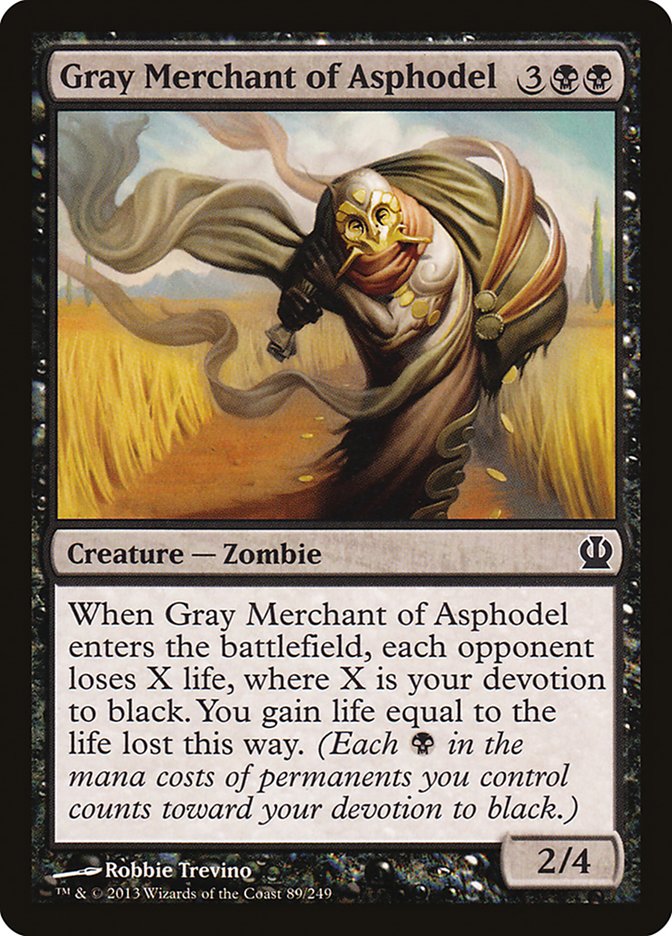
- Gray Merchant of Asphodel – Another zombies or mono-black staple, Gray Merchant (affectionately known as “Gary”) can end games out of nowhere with its life-drain Devotion ability.
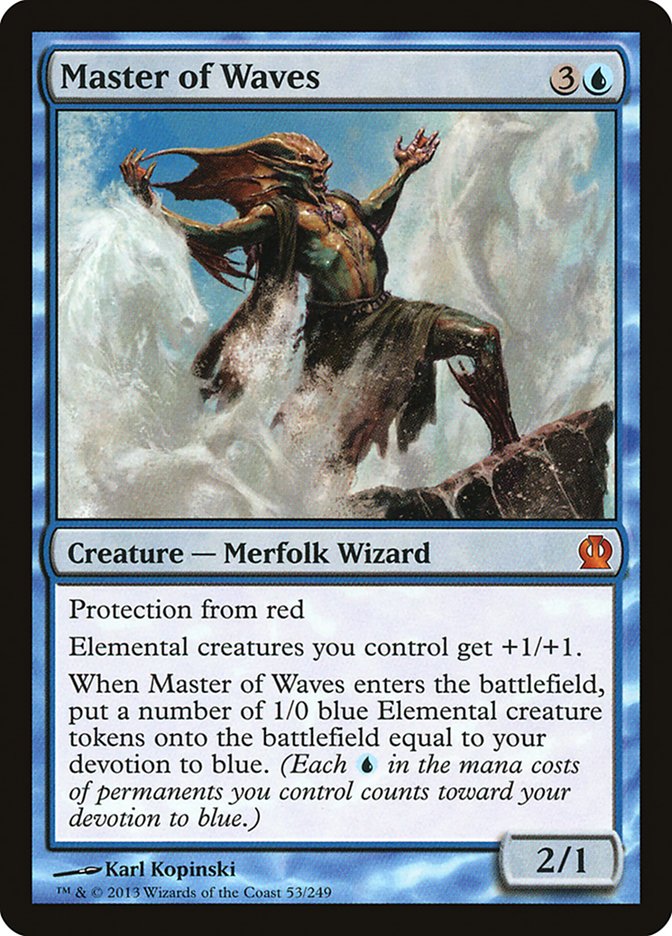
- Master of Waves – A Modern Merfolk staple, Master of Waves made quite a splash with its ability to make 0/1 Elementals.
The Journey Ahead
With the upcoming Theros: Beyond Death, it remains unclear whether Elspeth is truly gone; after all, coming back from the dead is a simpler affair on this plane. Theros’s undead are permitted to return to the mortal world, but must make a deal with Erebos to do so. What is Elspeth prepared to pay to come back?
In the meantime, another mysterious Planeswalker named Ashiok has made a deal with Phenax to infiltrate the dreams of mortals. Feeding off of nightmares, Ashiok manages to briefly raise a new God of Cities: Cacophony. However, Ephara, the God of the Polis, does manage to put an end to both this God and their plans.
Who knows what this new set will bring? We’ll see what the underworld has in store for us with Theros: Beyond Death!

A consummate lover of books, tea, food and instant-speed kill spells, Michelle is a person of many passions. Her hobbies include cuddling cats, throwing pottery, and analyzing Magic lore from a literary perspective. She is also a co-host of the Vorthos comedy podcast, “The Loregoyfs,” and she comprises a full 25% of The Felidar Guardian (specifically the right hand, left ear and both scapulas). Her CMC is 2BWU, and her ETB trigger creates two 1/1 cats with lifelink and trample.

